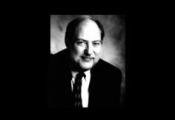A Passion for Jewish Reading Part 2
Rabbi Dov Gartenberg
August 25, 2005/20 Menachem Av 5765
In the past year I spent many hours reflecting on my experience as a pulpit rabbi in a Conservative congregation. One realization kept on recurring as I reflected on years of being part of a strong prayer community that had emerged in my former congregation. One thing I observed during the reading of the Torah was how few people followed the Humash-the text and commentary of the Torah that was publicly read in the synagogue. I also discovered in teaching families for Bar Mitzvah that many did not have Humashim at home and if they did they rarely opened them. The primary sense of public Judaism in the congregation was liturgical, a community that gathers for prayers. The young going through Bar or Bat Mitzvah were being acculturated to a community of prayer. I was more struck by what was missing. With a few exceptions most of the children and their parents had no concept of what it meant to engage in the study of texts or the joy of learning Jewishly with others.
The Torah service in the synagogue was primarily a ritual, not a serious engagement with reading. This is because the educational institutions of the synagogue and the day school struggle to convey a love of learning and engagement with Torah. Aware of this deep flaw in our community I became convinced that there needed to be a liberal Jewish initiative to celebrate and disseminate the Jewish love for reading, study, and engagement with texts. That is how Shivim Panim Latorah was born.
70 Faces of Torah is a Torah service with a Torah scroll. The core prayers of that service are retained, sung with melody, with a procession from the ark and the beloved traditions that accompany a public reading of the Torah in a quorum of 10 Jews (our service is egalitarian). But after the customary rituals we open up the scroll and engage in a deep reading of the Torah. Between eight to ten Humashim (Torah texts divided into weekly portions) with commentaries are distributed to participants who are asked to follow their commentaries on a passage of between 3-10 verses from the weekly portion. The value of multiple commentaries is that it enables everyone to get an appreciation of the multiple voices and approaches to the sacred text in Jewish tradition.
With these different perspectives we launch into a collective and deep reading of the text. I guide people first with questions of how to read the verses, refering to the differences in translation in the English commentaries and the implications of translating a biblical verse one way of another. Then I help make sense of the commentaries and the insights that they offer and the biases they represent. Lastly I bring selected sources from the rabbinic tradition as well as medieval and modern commentators who expand the conversation around the passage. In this way we begin to appreciate the loving attention and deep reading of the passage by previous generations. Lastly and most important, I ask people to close the book and reflect on how this newly mined passage informs our lives or gives insight for our times. This same approach is used for timelessly meaningful passages in the Torah as well as deeply problematic sections.
This form of reading is wonderful for many reasons. First, it slows down the process of reading allowing for reflection and imagination. Second, it conveys that sacred texts can have many readings and are not to be read one way. I think this is a very powerful antidote to the pervasive fundamentalism overwhelming all religions in our time. Third, we read together with others in an act of collective reading. All these sessions are interactive, carefully facilitated to encourage input from participants while I or other skilled teachers navigate the commentaries. Fourth, people see the profundity of the text and how it can be a spiritual resource in their lives. Lastly, it engenders in people a love for learning which leads them to the fullfilment of the mitzvah of Torah study as a part of their day or week.
In part three I want to share a wonderful essay by Sven Birkets from his book the Gutenberg Elegies about the experience of 'vertical reading'. His striking description of traditional reading captures exactly what I am trying to do in 70 Faces of Torah.

Subscribe to:
Post Comments (Atom)

No comments:
Post a Comment